7 Must-See Design Exhibitions to Catch in New York This Winter 👀
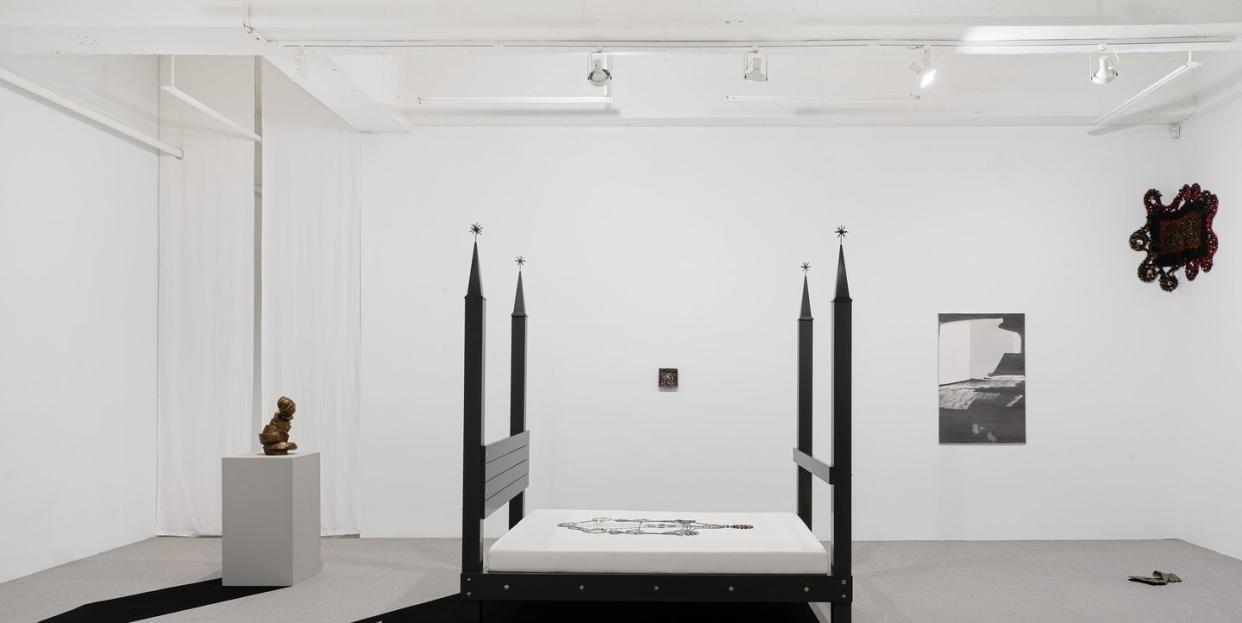
- Oops!Something went wrong.Please try again later.
December feels like a great time to hibernate. You may justifiably have a strong impulse to tell Alexa to stream Beyoncé’s “Cozy” while wrapped in a blanket. But as the holidays approach and mantel decorating and party plans take precedence, the city’s galleries and museums are full of great shows you should really see before you’re too stuffed to function. Here, we’ve rounded up a few of the shows and exhibitions captivating ELLE DECOR editors now.
“Soft and Sensitive” by Eny Lee Parker, Verso
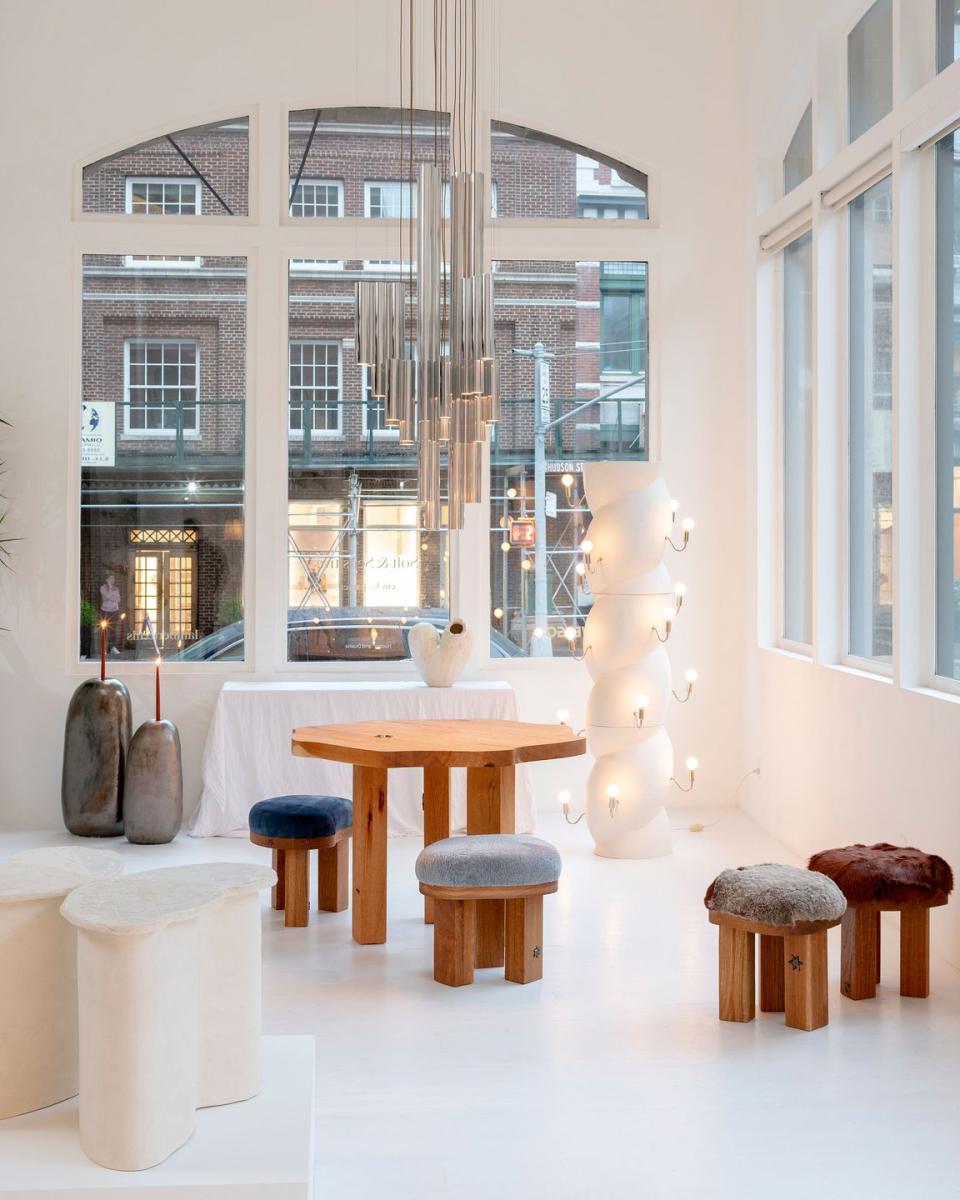
Designer Eny Lee Parker’s solo show, “Soft and Sensitive,” opened earlier this month at the new Verso space in TriBeCa. The collection, which ranges from pebble-shaped stools made of cast-off fabrics to heart-shaped ceramic vessels with “bullet” holes ripped into their stony flesh, is both playful and personal. A reflection on feelings of loneliness, the furnishings incorporate swirling metal accents—a nod to childhood doodles—while whimsical, star-shaped sconces and a butterfly cocktail table continue the youthful theme. On view through December 16. —Helena Madden
Anthony Guerrée for De La Espada, the Future Perfect
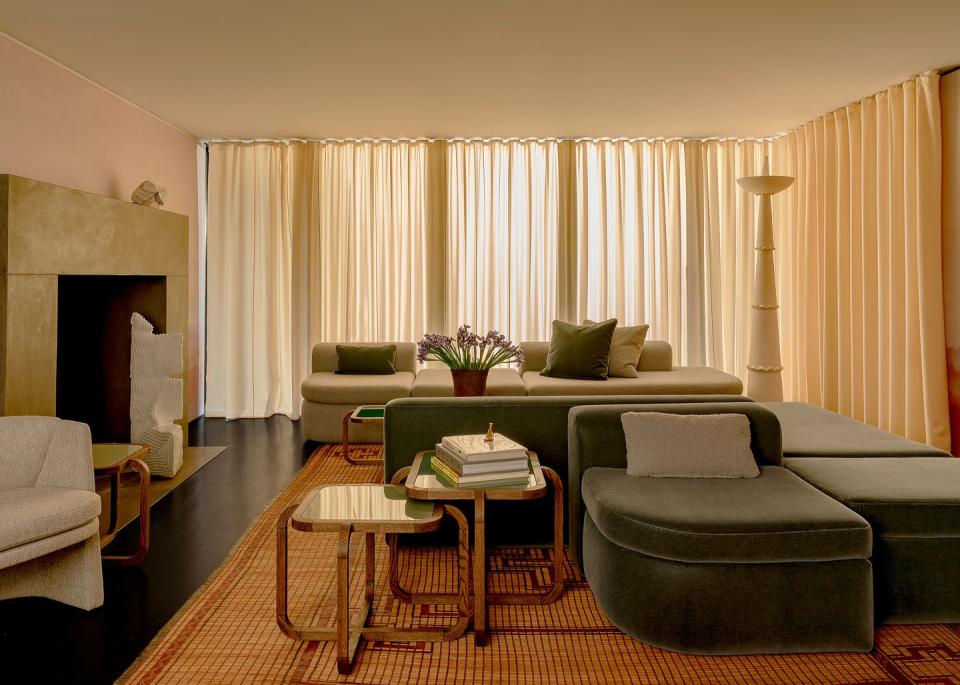
My first encounter with the French designer Anthony Guerrée’s work was at Le Corbusier Foundation in Paris, where he’d installed a collection of marble furniture and objets dubbed “Fragments.” They felt of a piece with their setting, designed not to stand out but to blend in. The same can be said of the work for Guerrée’s new exhibition at the Future Perfect, a collaboration with the Portugal-based manufacturer De La Espada. “You have to first admire the geometry,” says cofounder Luis De Oliveira as we huddle around the Cursa lounge chair, named for a star but reflective of the collection’s decidedly earthbound guiding light: elegance that asks you to take a step back. Upstairs, De La Espada Atelier’s Twenty-Five collection commemorates the brand’s 25th anniversary with a suite of furnishings that exemplify its commitment to craft and ingenuity. On view through January 6, 2023. —Sean Santiago
“Middle Fork” by Ellen Pong, Superhouse
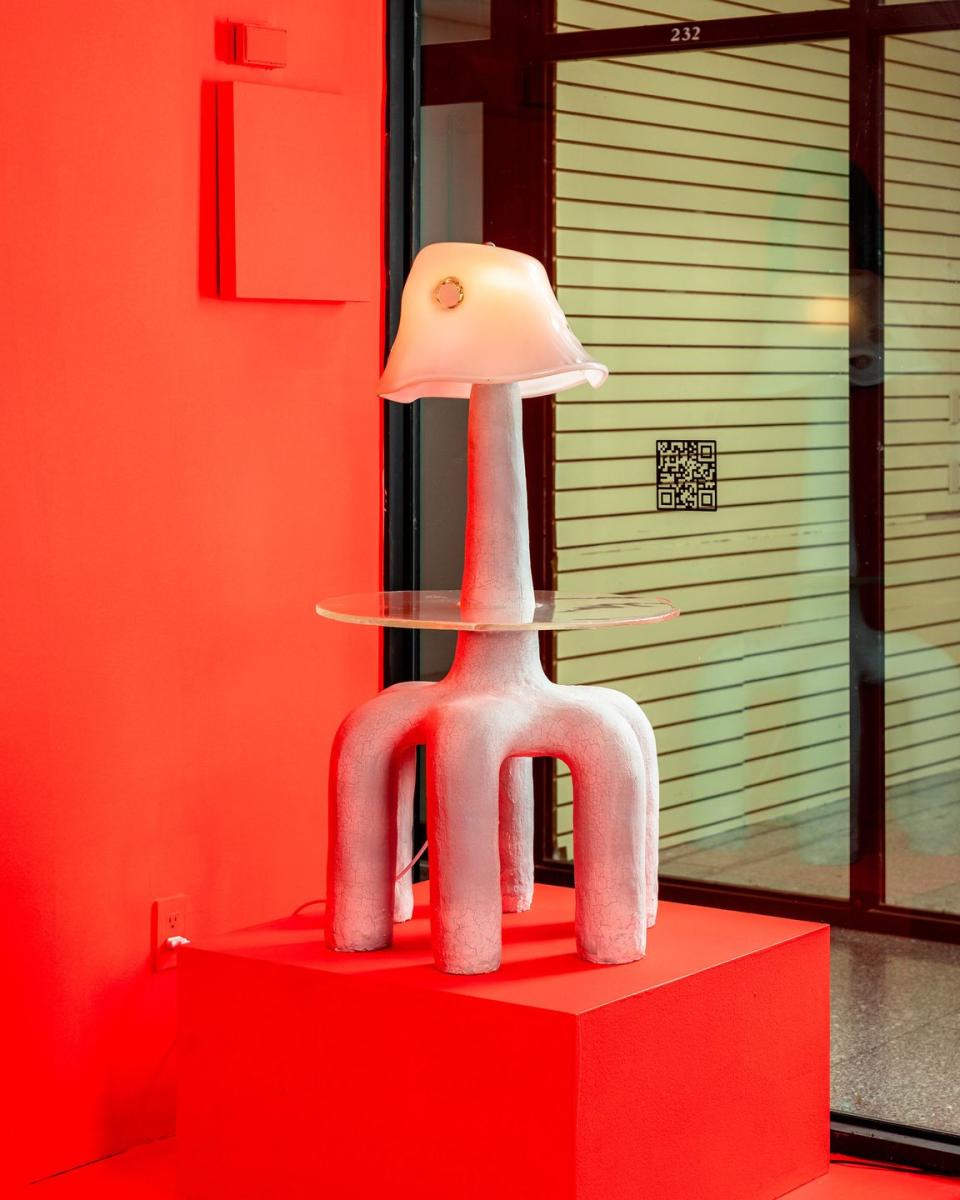
Designer Ellen Pong has installed her pensive solo debut “Middle Fork” at the newly expanded Superhouse. Gallery founder Stephen Markos walked me through the work—which was inspired by Pong’s time in the woods outside Seattle and set counterintuitively against unctuous red walls—and pointed out the ceramist’s first forays into glass, wood, and steel, fabricated with local artists and collaborators. Leaves in patinated and treated steel droop pleasingly from her new Houseplant lighting, while a series of mirrors inspired by gravestones feature a distressed, lichenesque finish and embedded candleholders, for which Pong fashioned beeswax candles herself. Her bench and cocktail tabletop further the ecological focus with timber sourced from a local wood mill that salvages felled trees from around the city. On view through January 8, 2023. —S.S.
“Wholesome” by Thomas Barger, Salon94 Design
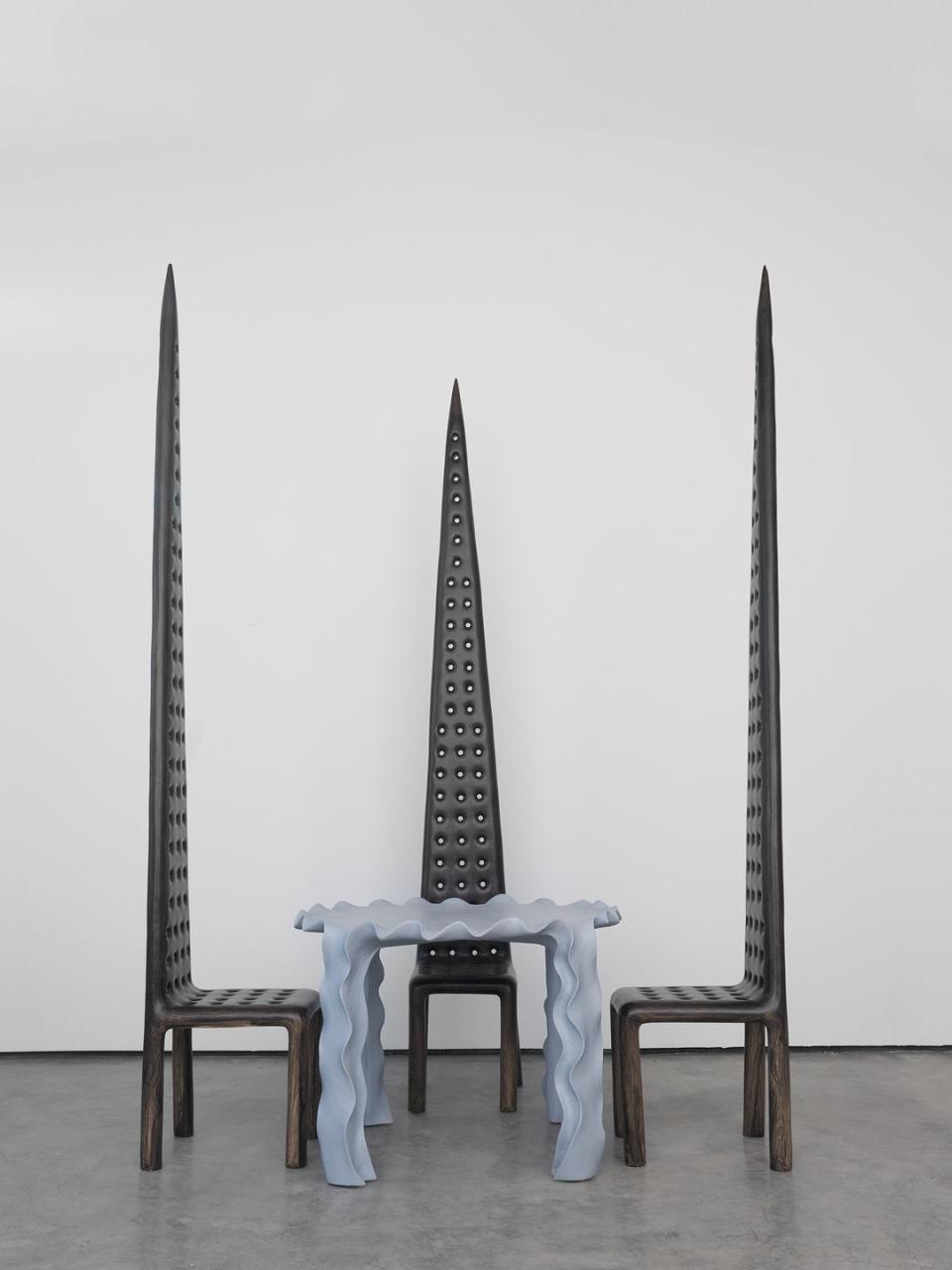
“I find myself in this corner a lot,” says the artist Thomas Barger, standing sandwiched between two chairs I likened earlier in our conversation to satanic totems. Each nine-and-a-half-feet tall, the seats are part of his solo show, “Wholesome,” currently installed at Salon94 Design. The name comes from Barger’s own corn-fed upbringing (he was raised on a farm in Illinois) as much as the repeated hole motif, as seen in large-scale paper pulp canvases “interrupted” by woven baskets and situated on crustacean-esque footrests; a series of dining and side tables with edges scalloped like pie tins that can be punctured with spiral charms; and peep holes embedded in small-scale wall works made from salvaged chair parts. The collection expands on Barger’s prior explorations of morality and identity while evidencing a refinement of craft. (His signature seats were put “on a diet,” resulting in a less bulky profile that might fit more easily under a dining table.) Much of the work evolved from commissions and is informed by a sense of play, hence the anthropomorphic bent and accessorizing. “You don’t have to be productive to be good,” Barger says. Take me to church. On view now through January 13, 2023. —S.S.
“Beyond Boundaries: Historical Art by and of People of Color,” Robert Simon
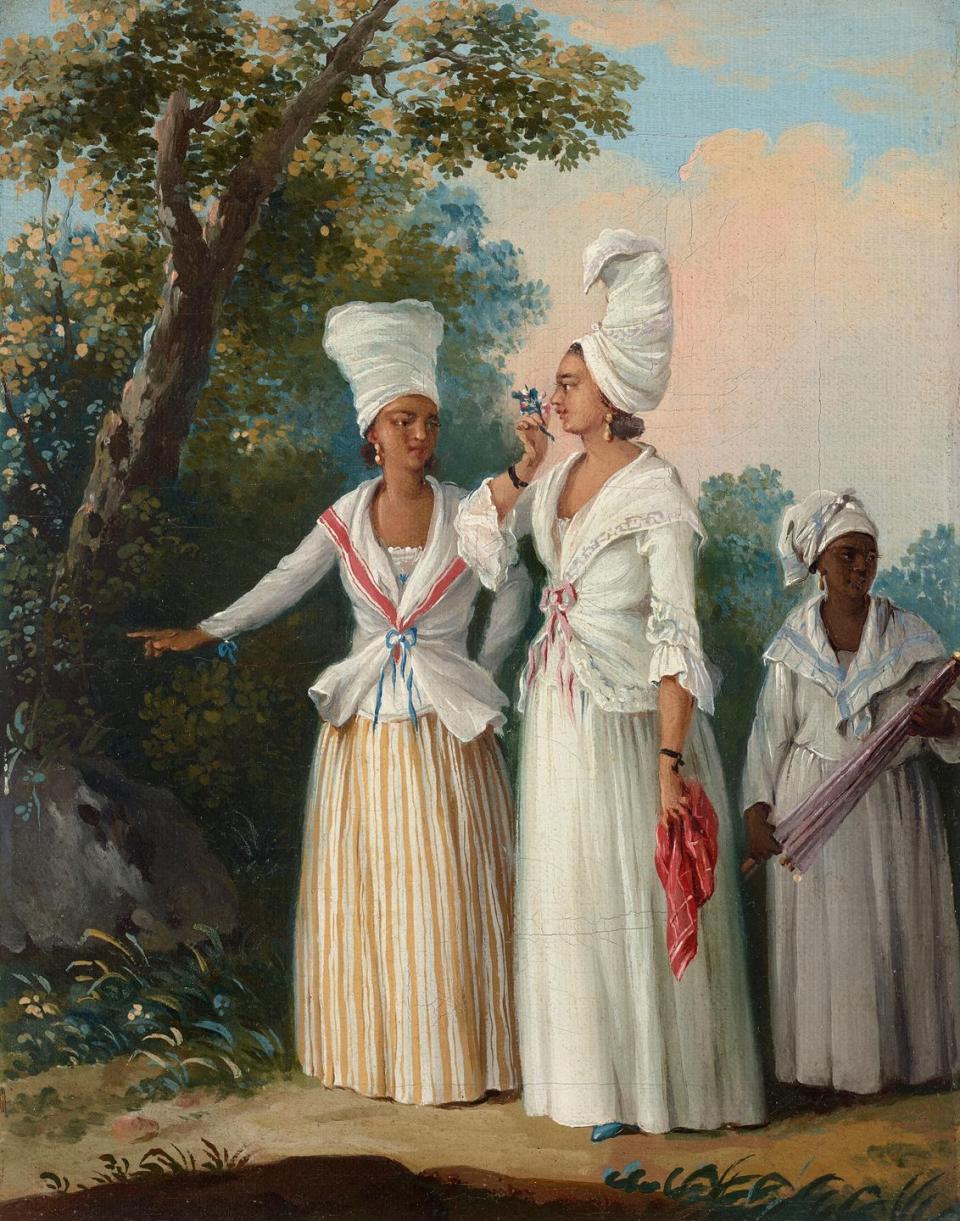
“Beyond Boundaries: Historical Art by and of People of Color” is a short and sweet survey of some of the earliest Black icons of the Western world. Showing at Robert Simon, the dealer and scholar behind what is said to be the first Leonardo da Vinci discovery in over a century, the exhibition features tapestries, paintings, sculpture, and ceramics that emphasize the driving force of Black ingenuity and influence in Europe and the New World between the 17th and 19th centuries. “I observed the demand for diversity in our museums and realized that most of the attention was being paid to contemporary art, while the rich record of the past was being largely overlooked,” Simon notes of the show’s genesis. “The inclusion of a broader range of art will not only diminish the sense of exclusion people of color feel in many museums, but will better introduce the public to the full wealth of the art of the past.” From a society portrait by Joshua Johnson, a resident of Baltimore and the first free, professional Black painter in the United States, to a 17th-century Gobelins tapestry of a “Kongolese Dignitary,” the works on view are both surprising and reassuring in the care and expertise that went into their production. On view through January 13. —Camille Okhio
“House for the Inhabitant Who Refused to Participate,” by Charlap Hyman & Herrero, Tina Kim Gallery

An exquisite exhibition opened last week at New York’s Tina Kim Gallery curated by architecture and design firm Charlap Hyman & Herrero. Shadow play was at its center – figuratively and literally – with contrasting felt covering the floor and freezing every object’s shadow in place. “House for the Inhabitant Who Refused to Participate” is an exploration of a single moment, an homage to a project of the same name by the American architect John Hejduk. A four-post bed with Sputnik finials by Hejduk anchors the gallery, complemented sweetly by a small ceramic relief by Italian ceramist Pietro Melandri of Leda and the Swan, casting subtle shadows of its own. Elsewhere in the show you can find curious references to frozen time in an Aubusson tapestry designed by celebrated modernist Methieu Matégot of a Tijuana sunset, and a small painting by Luke O’Halloran of playing cards wafting midair. Louise Bourgeois’ leaning “Labyrinthine Tower” introduces a feeling of precarity, and a pietra dura doorframe by sculptor duo Ficus Interfaith welcomes you over the threshold to nowhere. In its entirety, the show is a sensitive consideration of what it means to be present and whether there really is anything other than the current moment. On view through January 21. —C.O.
“The Masks We Wear,” “B” Dry Goods
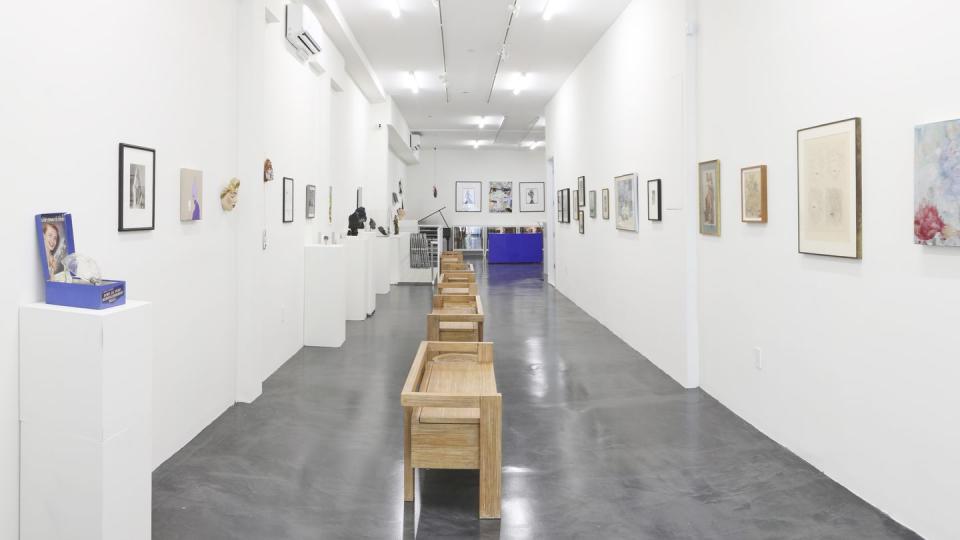
“The Masks We Wear” opens December 9 as the inaugural show of “B” Dry Goods, a new bookstore and exhibition space in Crown Heights, Brooklyn. The exhibition brings together 65 masks and objects from the ancient world to Dan masks from Côte d’Ivoire to works by René and Georgette Magritte. “I thought about what it meant to cover our faces so much, what it meant for getting to know people in this way, what it meant to hide ourselves from one another, and to come to treat this hiding as an act of solidarity,” says Gabe Boyers, the owner.
The thoughtful exhibition is at home in the new space, which sits somewhere between reading room, music hall, and design gallery. Visitors (which Boyers, a classical violinist and former antiquarian book dealer, hopes will consist heavily of locals) will be able to pluck a rare volume of poetry or photography from a glass shelf and sit to enjoy it anywhere in the gallery. What looks like an Yves Klein blue box in the gallery’s center is actually a comfortable, compact acrylic desk by Paul Kelley—the perfect place to peruse. Surprising design elements hide throughout the gallery in tree stump side tables from the estate of actor Dennis Hopper, Donald Judd–like benches for performances and further perusal, and a mural by artist Jeff Quinn in the bathroom.
If the books and masks are not enough to entice, there are such oddities as Katharine Hepburn’s toothbrush, Anna Pavlova’s ballet slipper, and an autographed quotation by Oscar Wilde (from a lecture in Brooklyn!) for sale. On view through January 22. —C.O.
“I’ll Have What She’s Having,” New-York Historical Society
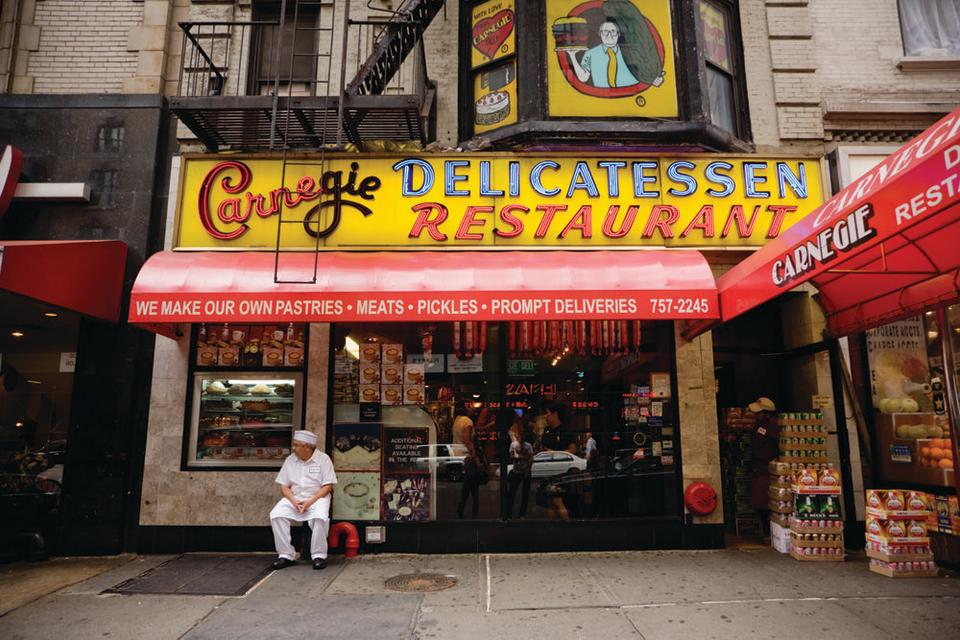
There are very few totems of New York City life more timeless and recognizable than the Jewish deli. From the golden era of the early 20th century through today, they remain institutions, with names so salient, like Katz’s, Russ & Daughters, and Barney Greengrass, that uttering them immediately conjures visions—and tastes—of matzoh balls, lox, and schmeared bagels. Through a cured, er, curated mishmash of ephemera like original neon signs, photographs, and menus, “I’ll Have What She’s Having” (a 1980s rom-com reference that needs no explanation) at the New-York Historical Society explores the cultural significance of the deli across the United States.
For some, they’re simply places to eat, and for others, like Holocaust survivors who immigrated here after the war, they’re something more meaningful: a place of safety and community. (This writer and his father sought refuge among a throng of Upper East Siders at the famous, now-defunct Kaplan’s, the morning of 9/11, where, while stress-eating Reuben sandwiches, we watched the Twin Towers collapse on TV.) The exhibition pays tribute to the ineffable charm and magnetism of the Jewish deli, a diasporic phenomenon that like so many Big Apple icons, is now endangered. So after your visit, treat yourself to some whitefish salad and a few slices of sable at nearby Barney Greengrass. You’ll instantly understand the hype. On view through April 2, 2023. —Charles Curkin
TKTK.
You Might Also Like

